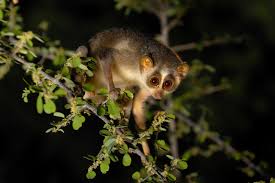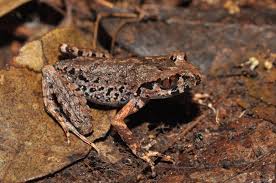Today’s Current Affairs: 19th April 2024 for UPSC IAS exams, State PSC exams, SSC CGL, State SSC, RRB, Railways, Banking Exam & IBPS, etc
Table of Contents
Gray Slender Loris:

A Gray Slender Loris was rescued by forest officials in North Goa.
- Gray Slender Loris is a small primate native to India and Sri Lanka that lives in subtropical and tropical forests.
- Gray slender lorises are nocturnal hunters and foragers that use their large, forward-facing eyes to detect prey.
- They are insectivores that eat mostly ants and termites, but also eat beetles, spiders, mollusks, and other small vertebrates.
- The Gray Slender Loris is listed on the Red List of the International Union for Conservation of Nature (IUCN) and is protected under the Wildlife Protection Act of 1972.
UNFPA State Of World Population Report:

The United Nations Population Fund’s (UNFPA) State of World Population – 2024 report revealed that India’s population is estimated to double in 77 years.
- India leads globally with an estimated population of 1.44 billion, followed by China at 1.425 billion.
- India’s population was recorded at 1.21 billion during the last census, conducted in 2011.
- The report revealed that 24% were aged 0-14, 17% aged 10-19, and 26% aged 10-24. 68% aged 15-64, and 7% aged 65 and above.
- Men have a life expectancy of 71 years and women 74 years.
- The report also highlighted that 30 years of India’s progress in sexual and reproductive health has largely ignored the most marginalised communities globally. It noted that the percentage of child marriage in India was at 23% between 2006-2023.
- Maternal deaths in India have significantly decreased, making up 8% of global maternal fatalities.
- The report highlights that Maternal mortality is high among indigenous groups. Women with disabilities are more vulnerable to gender-based violence.
- Vulnerable groups face greater sexual and reproductive health risks, exacerbated by factors like climate change and caste-based discrimination.
Inter-Agency Space Debris Coordination Committee : Annual Meet

India, through ISRO, aims to achieve debris-free space missions by 2030, as declared at the 42nd Inter-Agency Space Debris Coordination Committee (IADC) annual meet.
- This initiative seeks the participation of all Indian space actors, governmental and non-governmental, to ensure long-term sustainability in outer space.
- ISRO has a comprehensive plan for space exploration and utilization, with a focus on disposing of non-functional spacecraft and preventing the creation of debris.
- The Inter-Agency Space Debris Coordination Committee (IADC) is an international intergovernmental forum that coordinates activities related to man-made and natural debris in space.
- The IADC was founded on October 25, 1993, to coordinate efforts to deal with debris in orbit around the Earth.
- The IADC is recognized as the internationally recognized technical authority on space debris.
Prostate Cancer : Lancet Report

A recent Lancet Commission paper highlights the alarming rise in prostate cancer cases in India, leading to a higher mortality rate due to late-stage diagnosis.
- The Lancet Commission report predicts a global surge in prostate cancer cases, with low and middle-income countries facing the most substantial increase.
- Worldwide, prostate cancer was responsible for approximately 3,75,000 deaths in 2020, ranking it as the fifth leading cause of cancer-related deaths in men.
- It currently accounts for 3% of all cancers in India, with an estimated 33,000-42,000 new cases annually.
- Ageing populations and increasing life expectancy contribute to higher numbers of older men, increasing the risk of prostate cancer.
- The risk factors for prostate cancer include age (especially over 50), genetics, diet, obesity, smoking, chemical exposure, prostate inflammation, and hormonal factors.
- Prostate cancer is typically asymptomatic in its early stages, but symptoms may include difficulty urinating, frequent urination (especially at night), blood in the urine, erectile dysfunction, and lower back or thigh pain.
- In India, a large number of patients are diagnosed with advanced-stage cancer, leading to a 65% mortality rate.
- Globally, prostate cancer cases are expected to double by 2040, with low and middle-income countries facing the most significant rise, including India where new cases are projected to reach 71,000 annually.
Prostate Cancer:
- Prostate cancer is a type of cancer that develops in the prostate, a small gland in the male reproductive system located below the bladder.
- The prostate gland produces fluid that nourishes and transports sperm.
Surya Tilak Project:

The Surya Tilak Project, a remarkable endeavour, recently unfolded at Ayodhya, bringing sunlight to the forehead of Sri Ram Lalla.
- The Surya Tilak Project represents a unique fusion of technology and tradition, meticulously engineered to illuminate the forehead of Lord Ram’s idol with a precise beam of sunlight during the revered festival of Ram Navami.
- The Indian Institute of Astrophysics (IIA) under the Department of Science and Technology was crucial in the Surya Tilak Project at Ayodhya.
- The IIA team carried out the calculation of the sun’s position, design, and optimisation of the optical system for the Surya Tilak Project.
- The Ram Navami date varies each year following the Gregorian calendar due to its solar nature, while the Hindu calendar is lunar-based.
- The Gregorian calendar is based on Earth’s revolution around the Sun, making it a solar calendar with roughly 365 days in a year, whereas the Hindu calendar is based on the Moon’s revolution around Earth, making it a lunar calendar with roughly 354 days in a year.
- The Surya Tilak with 4 mirrors and 2 lenses was executed, with IIA technical experts participating in testing, assembly, integration, and validation at the site.
- The implementation of the optomechanical system at the site was done by Central Building Research Institute (CBRI)
National Consumer Disputes Redressal Commission:

The Supreme Court (SC) recently issued notice to two members of the NCDRC seeking explanation from them for issuing non-bailable warrants against the directors of a company, ignoring a previous interim order of the SC.
- National Consumer Disputes Redressal Commission (NCDRC) is a quasi-judicial commission in India which was set up in 1988 under the Consumer Protection Act of 1986.
- Mandate is to provide inexpensive, speedy and summary redressal of consumer disputes.
- Its head office is in New Delhi.
- The Commission is headed by a sitting or a retired Judge of the SC or a sitting or a retired Chief Justice of a High Court.
- NCDRC shall have jurisdiction to entertain a complaint valued more than two crore and also have appellate and revisional jurisdiction from the orders of State Commissions or the District fora as the case may be.
- The provisions of this act cover ‘goods’ as well as ‘services’.
- The goods are those which are manufactured or produced and sold to consumers through wholesalers and retailers.
- The services are in the nature of transport, telephone, electricity, housing, banking, insurance, medical treatment, etc.
B Virus:

A 37-year-old man wounded by a wild monkey in Hong Kong is in intensive care suffering from infection with B virus.
- B Virus is an alphaherpesvirus enzootic in macaques of the genus Macaca.
- B virus is the only identified old-world-monkey herpesvirus.
- It is also known as herpes B virus or Macacine herpesvirus 1 (McHV-1).
- It is a type of herpesvirus found in macaque monkeys, particularly rhesus macaques.
- It is asymptomatic in these animals; it can cause severe neurological complications, including encephalitis.
- Transmission: In humans, it is transmitted through bites, scratches, or contact with infected bodily fluids. The transmission of this virus among humans is rare. So far, only one case of human to human transmission has been recorded.
- Its infections in humans are rare but potentially fatal, with symptoms ranging from fever and headache to neurological dysfunction and death.
- The common symptoms seen during the infection are: fever, headache, myalgia, localized neurologic symptoms might occur near the wound site.
- Signs of infection in a human usually develop within two to 30 days.
- There may be blisters around the contact point or wound, together with a flu-like illness.
- The virus can spread to lymph nodes and the nervous system.
- This causes agitation, confusion, double vision, trouble with coordination and muscle weakness.
- Patients can develop hiccups if this inflammation involves the brain stem.
- If it reaches the lungs, they may need to be admitted to an intensive care unit.
- There are no vaccines that can protect humans against B virus infection.
Submersible Platform For Acoustic Characterisation And Evaluation:

A state-of-the-art Submersible Platform for Acoustic Characterisation and Evaluation (SPACE) was inaugurated by Secretary, Department of Defence (R&D) and Chairman DRDO in Kerala.
- Submersible Platform for Acoustic Characterisation and Evaluation is set up by the Naval Physical & Oceanographic Laboratory of the Defence Research and Development Organisation (DRDO).
- It has been designed as a premier testing and evaluation hub for sonar systems destined for the Indian Navy onboard various platforms including ships, submarines and helicopters.
- It will consist of two distinct assemblages – a platform which floats on the water surface, and a submersible platform which can be lowered to any depth up to 100 m using winch systems.
- It will mainly be utilised for the evaluation of a complete sonar system, allowing for quick deployment and easy recovery of scientific packages such as sensors and transducers.
- It will be suitable for survey, sampling and data collection of air, surface, mid-water, and reservoir floor parameters using modern scientific instrumentation.
- It will cater to the needs of data processing and sample analyses in modern, well equipped scientific laboratories heralding a new era of Anti-Submarine Warfare research capabilities.
Frequency Of Heatwave Increases:

India Meteorological Department (IMD) has predicted an increase in the maximum temperature and the frequency of heatwave conditions in the forthcoming days over eastern and southern India.
- Heat wave is a condition of air temperature which becomes fatal to human body when exposed.
- It is defined based on the temperature thresholds over a region in terms of actual temperature or its departure from normal.
- The IMD will declare a heatwave:
- if the maximum temperature recorded at a station is 40 degrees Celsius or more in the plains, 37 degrees Celsius or more in the coast, and 30 degrees Celsius or more in the hills.
- a heatwave’s severity is determined by its departure from normal temperature.
- there is a ‘normal heatwave’ when the departure is by 4.5-6.4 degrees Celsius and a ‘severe heatwave’ if the departure is greater.
- Heat wave declaration could also be based on actual maximum temperature:
- A ‘heatwave’ is when this figure is greater than 45 degrees Celsius and a ‘severe heatwave’ when greater than 47 degrees Celsius.
- The IMD takes these two ‘routes’ only when at least two stations in a meteorological subdivision report such a high maximum or when at least one station has recorded a corresponding departure from the normal for at least two consecutive days.
Leaf Litter Frog:

Scientists have found that Leaf Litter Frog emits ultrasonic sounds that are inaudible to humans but can scare off predators.
- Leaf Litter Frog is the most abundant species of frog in the forest community.
- It utilizes its high-frequency screams as a survival strategy.
- It inhabits primary and secondary forests and forest edges.
- It is usually found in the leaf-litter on the forest floor, or on leaves in low vegetation inside the forest.
- They are tiny and the largest of the species are females. In size, they are barely up to 64 millimeters (2.5 inches) in length.
- It is a species of frog endemic to the Brazilian Atlantic rainforest.
- Conservation status
- IUCN: Least concern




